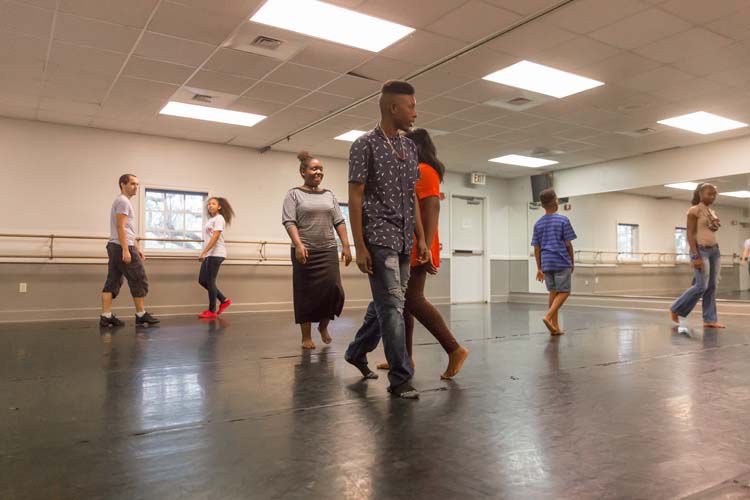There will be mostly white visitors to Vero Beach Museum of Art’s exhibit of pottery and poetry by David Drake and they may marvel at the 19th century African-American slave from South Carolina whose works are on display. The resourcefulness it took the man known simply as Dave to create such beautiful pieces and to write such inspired inscriptions is moving; some verses hint at using the stars as a means to escape to freedom.
Still, the emotion behind the works and the words they bear may elude those whose ancestry does not include slaves like Dave. Though the pots are in America’s premier collecting museum, the Smithsonian, and fetch as much as $40,000 at auction, historians give them value that is harder to quantify, calling the works an early act of defiance in the civil rights movement.
Next Wednesday, when Ballet Vero Beach presents its latest collaboration with the museum, the audience in the typically packed Leonhardt Auditorium will view on a large screen an intimate moment captured on video one afternoon last week, a moment that might make Dave’s work more wondrous.
A small group of African-American students, middle- and high-school aged, participated in a movement workshop staged and recorded by Adam Schnell, the ballet company’s founder. Among their prompts: They were asked to imagine the worst thing anyone had ever called them, then move to the emotion it provoked.
The Drake exhibition is one of three that Ballet Vero Beach dancers will interpret. The others, impressionistic landscapes by Florida artist Bruce Marsh and works from “The American Spirit: Selections from the Manoogian Collection,” have inspired, respectively, a contemporary trio choreographed by Camilo Rodriguez and a classical duet by Matthew Carter.
That left Schnell to draw the Dave show – and it proved a wild card. Dave (Drake was the name of one of his masters) was somehow able to learn to read and write – forbidden skills for many slaves. In the clay pots he made, he often etched phrases or simply rhymes. Reading between those lines is Schnell’s self-appointed task, one for which he felt he sorely needed help.
“I knew that my perspective on this exhibit would mean nothing. It’s an amazing story but it’s not going to resonate,” says Schnell. “I was thinking about a group that would add something to his story and drive it home to the audience.”
He called on Vero’s Youth Guidance Program to find volunteers for his workshop. “Just through the wonder of these kids we realize we have a lot to learn about this world.”
At his prompts, inspired by music Schnell chose – most of it familiar to them, like Beyoncé’s “Listen” – they moved through the studio, interpreting various cues while following his directions. Turn, speed up, slow down, interact. At one point, they stretched out on the floor and wrote down positive or negative words on paper.
“If you were David Drake the potter, and people were finding your artistic work 150 years later and they were studying it, what kind of change would you hope to inspire in the world?” prompted Schnell. “Would you want peace, do you want happiness, do you want everyone to be able to afford the next iPhone?”
A girl wrinkled her nose. Silently they went to work and wrote. Understanding. Unique. Equality. “Now write down a word you’ve heard that you felt took away all your power, and made you feel small and insignificant.”
Ghetto. Crazy. Wannabe.
Then they got to their feet and held the papers to their chests. Moving through the room to the music, each squared off with another participant who read the word and reacted.
Awkward? Hardly. All the kids participated diligently, giving Schnell their rapt attention. “That was beautiful,” remarked one 10th-grade girl somberly at the end of an exercise.
That night, Schnell edited the video he captured at the end of each prompt. He lay down a sound track and mulled over what to tell the professional dancers who would perform on stage while the video was screened behind them.
His decision: Nothing. “We’ve never done improv for an audience. I want it to be a total surprise to the dancers.”
Tickets are distributed free by Ballet Vero Beach to various non-profits like Youth Guidance, Boys and Girls Club and the Gifford Youth Activity Center. For a main-stage performance, it can be as many as 300. “That’s the whole point of our tag line: Dance is a universal language,” says Schnell. “We try to be all-encompassing.”
The museum collaborations are often sellouts, but he’s hoping to have some seats free for the workshop.

